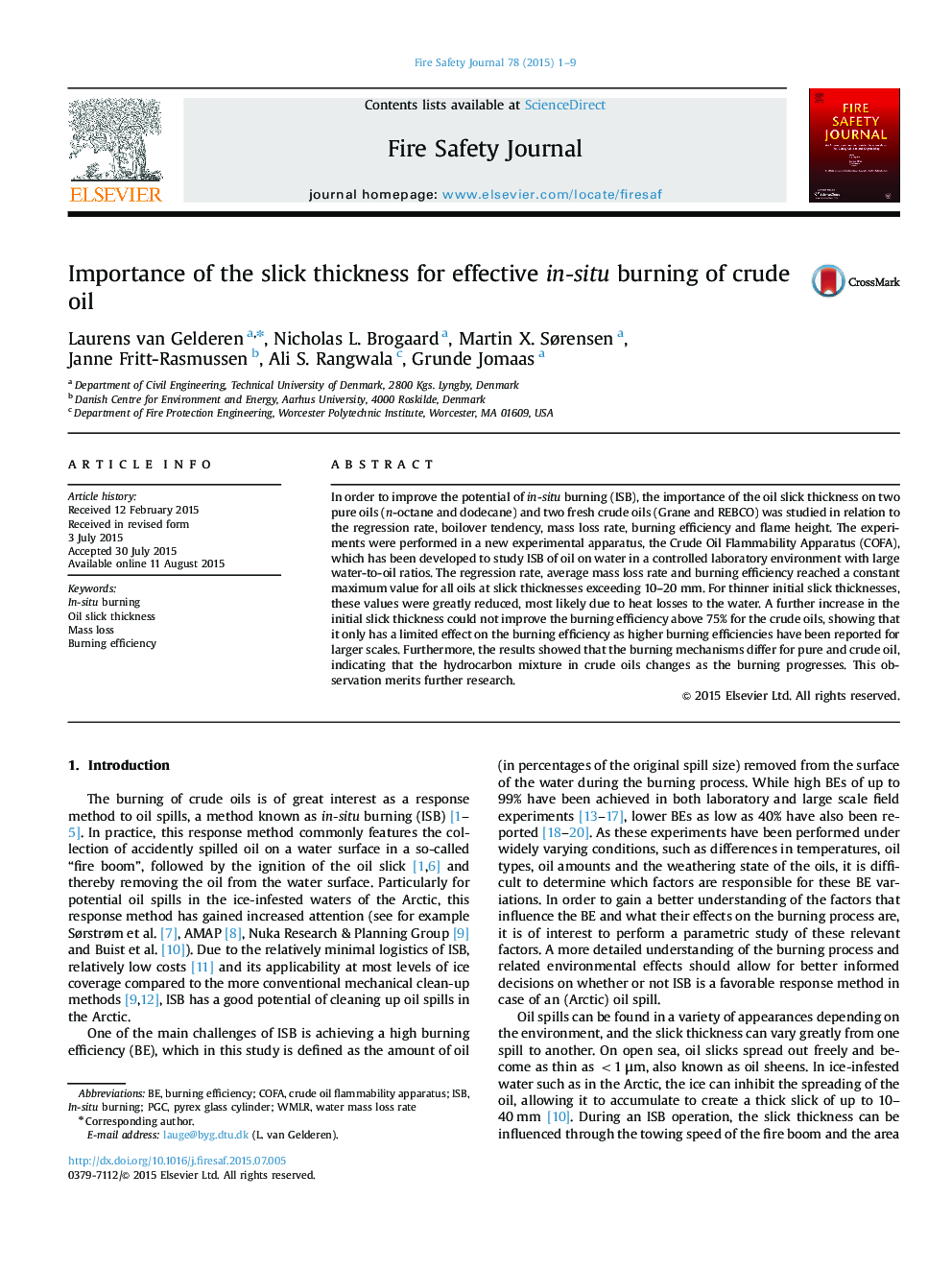| کد مقاله | کد نشریه | سال انتشار | مقاله انگلیسی | نسخه تمام متن |
|---|---|---|---|---|
| 269725 | 504698 | 2015 | 9 صفحه PDF | دانلود رایگان |
• Burning parameters reached maximum values above 10–20 mm initial slick thickness.
• Boilover occurred for fuels with a boiling point greater than 215 °C.
• The slick thickness was found to have a limited influence on the burning efficiency.
• The burning results suggested that the crude oil's composition changes over time.
In order to improve the potential of in-situ burning (ISB), the importance of the oil slick thickness on two pure oils (n-octane and dodecane) and two fresh crude oils (Grane and REBCO) was studied in relation to the regression rate, boilover tendency, mass loss rate, burning efficiency and flame height. The experiments were performed in a new experimental apparatus, the Crude Oil Flammability Apparatus (COFA), which has been developed to study ISB of oil on water in a controlled laboratory environment with large water-to-oil ratios. The regression rate, average mass loss rate and burning efficiency reached a constant maximum value for all oils at slick thicknesses exceeding 10–20 mm. For thinner initial slick thicknesses, these values were greatly reduced, most likely due to heat losses to the water. A further increase in the initial slick thickness could not improve the burning efficiency above 75% for the crude oils, showing that it only has a limited effect on the burning efficiency as higher burning efficiencies have been reported for larger scales. Furthermore, the results showed that the burning mechanisms differ for pure and crude oil, indicating that the hydrocarbon mixture in crude oils changes as the burning progresses. This observation merits further research.
Journal: Fire Safety Journal - Volume 78, November 2015, Pages 1–9
